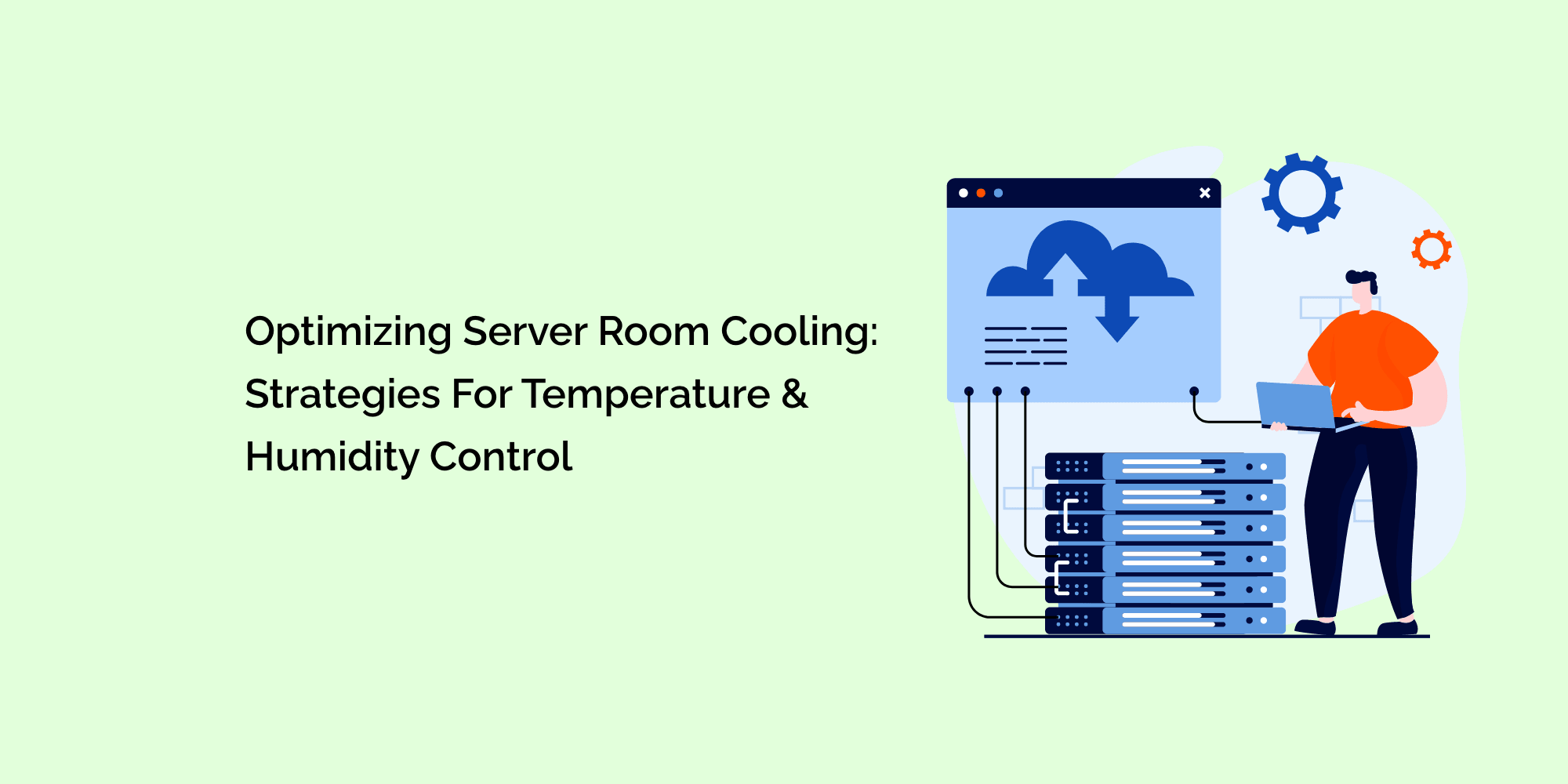Efficient cooling is crucial for maintaining optimal operating conditions in server rooms and data centers. This comprehensive blog will explore strategies for optimizing server room cooling to ensure the proper temperature and humidity levels. By implementing effective cooling strategies, data center operators can enhance equipment performance, extend hardware lifespan, reduce energy consumption, and mitigate the risk of equipment failures. Let's delve into the key strategies and best practices for achieving efficient temperature and humidity control in server rooms.
Understanding Temperature and Humidity Requirements
-
Ideal Temperature Range: Discuss the recommended temperature range for server rooms, typically between 20-25°C (68-77°F). Explain the impact of temperature extremes on equipment performance, emphasizing the need for maintaining a consistent temperature within the recommended range.
- Humidity Considerations: Explore the ideal humidity range for server rooms, usually between 40-60% relative humidity. Discuss the effects of high and low humidity levels on equipment reliability, such as condensation, electrostatic discharge (ESD), and corrosion.
Proper Airflow Management
-
Hot and Cold Aisle Containment: Explain the concept of separating hot and cold airflows in server rooms using containment systems. Discuss the benefits of reducing air mixing, improving cooling efficiency, and preventing hotspots.
-
Cable Management: Emphasize the importance of organized cable management to ensure unobstructed airflow. Discuss cable routing techniques, such as overhead or underfloor cable trays, to optimize airflow paths and prevent airflow restrictions.
- Rack Layout and Equipment Positioning: Guide rack layout, spacing, and equipment positioning to promote proper airflow. Discuss best practices for front-to-back or bottom-to-top airflow configurations and the importance of leaving sufficient clearance around equipment.
Cooling System Selection
-
Precision Cooling: Discuss the benefits of precision cooling systems, such as computer room air conditioners (CRAC) or computer room air handlers (CRAH). Explain how these systems offer precise temperature and humidity control, scalability, and energy efficiency.
-
Liquid Cooling Solutions: Explore liquid cooling options, including direct-to-chip or immersion cooling. Discuss their benefits in high-density environments, energy efficiency improvements, and considerations for implementation.
- Free Cooling and Economizer Techniques: Explain the concept of using outdoor air or chilled water from external sources for cooling during favorable weather conditions. Discuss the energy savings and considerations for implementing free cooling or economizer systems.
Monitoring and Automation
-
Environmental Monitoring Systems: Discuss the importance of real-time monitoring of temperature, humidity, and other environmental parameters in server rooms. Explain the benefits of automated systems that provide alerts, historical data analysis, and trend monitoring to identify potential issues.
- Intelligent Control Systems: Explore the use of intelligent control systems that optimize cooling based on real-time data, equipment loads, and environmental conditions. Discuss the benefits of dynamic temperature and airflow adjustments to achieve energy efficiency and precise control.
Energy Efficiency Measures
-
Hot Aisle/Cold Aisle Setup: Discuss the advantages of organizing server racks into hot and cold aisles to optimize cooling efficiency. Explain how this layout minimizes mixing hot and cold airflows, reducing energy consumption and improving cooling effectiveness.
-
Equipment Consolidation and Virtualization: Highlight the benefits of server consolidation and virtualization in reducing hardware footprint and power consumption. Discuss the potential energy savings achieved by decommissioning underutilized servers and adopting virtualization technologies.
- Airflow Optimization: Discuss additional measures for airflow optimization, such as using blanking panels to seal unused rack spaces, deploying efficient server fans, and regularly cleaning air filters to maintain optimal airflow.
Certainly! Here are some frequently asked questions (FAQs) related to optimizing server room cooling and temperature control:
Why is it essential to optimize server room cooling?
Optimizing server room cooling is crucial for maintaining server equipment's performance, reliability, and longevity. Proper temperature control helps prevent overheating, reduces the risk of equipment failure, and ensures consistent operation, minimizing downtime and data loss.
What is the ideal temperature range for server rooms?
The ideal temperature range for server rooms is typically between 20-25°C (68-77°F). This range provides a balance between cooling efficiency and equipment performance. Avoiding temperature extremes to prevent thermal stress on server components is essential.
How can proper airflow management contribute to cooling optimization?
Proper airflow management ensures that cool air is efficiently distributed to server equipment and hot air is effectively exhausted. Techniques such as hot and cold aisle containment, cable management, and strategic equipment positioning help minimize air mixing, prevent hotspots, and improve cooling efficiency.
Conclusion
Optimizing server room cooling is crucial for maintaining data center equipment's performance, reliability, and energy efficiency. Data center operators can achieve optimal temperature and humidity control by implementing strategies such as proper airflow management, selecting efficient cooling systems, monitoring environmental conditions, and adopting energy-saving practices. These measures enhance equipment performance and contribute to cost savings and sustainability goals. With careful planning and implementation of cooling strategies, data centers can create a stable and controlled environment that maximizes the lifespan of server equipment while minimizing energy consumption and operational risks.








